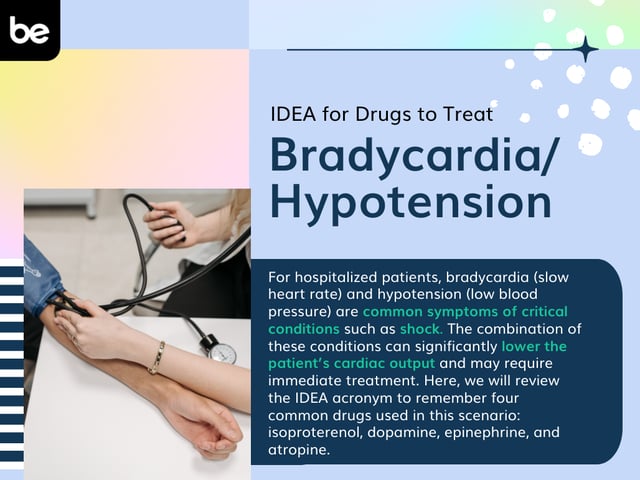
How to Write a Nursing Care Plan
Care plans are essential for the work of nurses. Care plans help nurses learn how to focus on the individual when conducting patient care and achieve success through the nursing process.
Having a formal written care plan is an important piece of guidance in the nursing profession and is a skill that nursing students and practicing nurses should be well versed in.
For those nurses looking to improve their care plan creation, here are some tips for writing an effective nursing care plan.
Nursing Care Plan Fundamentals
When approaching a nursing care plan, you must uncover the patient’s most pressing problem. Is your patient experiencing treatable medical issues? Is there perhaps a psychosocial element to their condition?
Having a good understanding of the problems facing your patient is important to determine the most effective path to treatment.
During treatment, the condition of the patient may change due to the success or failure of the treatment, or their condition may change due to another cause entirely. This is why nursing care plans must be fluid and adapt to changes in data and observations.
Every nursing care plan is based on 5 fundamental steps:
-
Assessment
-
Diagnosis
-
Goals and Planning
-
Implementation
-
Evaluation
Let’s further break down these fundamental steps for step-by-step guidance on accomplishing these tasks.
What are the building blocks of a nursing care plan?
1. Assessment
The assessment phase of the nursing care plan will require you to think critically and obtain information from the patient. Data you collect in the assessment phase will be split into subjective and objective data.
Subjective data includes verbal statements from patients. Examples include the patient’s perceptions of their condition, or the rating they assign to their pain. This data can come from sources close to the patient or the patient themselves.
Objective data includes stats like height, weight, blood pressure, temperature, or other measurable data points. This type of data is gathered by tools like a scale, blood pressure monitor, or thermometer and is often expressed in precise measurements.
Keep in mind that not all assessment information has to be gathered in the current moment .. Oftentimes relevant patient information can be gathered by looking into medical history or having discussions with other relevant care providers. Once you’ve gathered information on the patient, you can begin looking for issues that might point to a relevant nursing diagnosis.
2. Diagnosis
The second part of creating a nursing care plan is the diagnostic phase. This step will require you to refer to the data you gathered in step one. In the diagnostic phase, you will look to develop an official nurse’s diagnosis of the patient.
The North American Nursing Diagnosis Association (NANDA) defines a nursing diagnosis as “a clinical judgment about the human response to health conditions/life processes, or a vulnerability for that response by an individual, family, group or community.” The diagnosis will be derived from both objective and subjective data in step one. The diagnosis could be centered around a problem the patient currently has (such as anxiety), something they are at risk for (like falling), or it could focus on helping them achieve a greater level of wellness, such as a diagnosis for enhanced spiritual well-being.
The diagnosis is important as it sets the groundwork for how you will approach patient treatment and what actions you will take for their health. While the diagnosis you make will establish treatment goals for your patient, it should not be confused with a medical diagnosis, which is made by a doctor or advanced practitioner. For example, while a patient might have a medical diagnosis of obesity, their nursing diagnosis may be something like “sedentary lifestyle, as evidenced by insufficient motivation for physical activity.”
NANDA regularly updates their nursing diagnosis and interventions as nursing knowledge evolves. The 12th edition contains diagnosis grouped into the following 13 domains and related classes:
Domain 1: Health Promotion
Class 1: Health Awareness
Class 2: Health Management
Domain 2: Nutrition
Class 1: Indigestion
Class 2: Digestion
Class 3: Absorption
Class 4: Metabolism
Class 5: Hydration
Domain 3: Elimination and Exchange
Class 1: Urinary Function
Class 2: Gastrointestinal Function
Class 3: Integumentary Function
Class 4: Respiratory Function
Domain 4: Activity and Rest
Class 1: Sleep/Rest
Class 2: Activity/Exercise
Class 3: Energy Balance
Class 4: Cardiovascular and Pulmonary Responses
Class 5: Self-Care
Domain 5: Perception and Cognition
Class 1: Attention
Class 2: Orientation
Class 3: Sensation/Perception
Class 4: Cognition
Class 5: Communication
Domain 6: Self-Perception
Class 1: Self-Concept
Class 2: Self-Esteem
Class 3: Body Image
Domain 7: Role Relationship
Class 1: Caregiving Roles
Class 2: Family Relationships
Class 3: Role Performance
Domain 8: Sexuality
Class 1: Sexual Identity
Class 2: Sexual Function
Class 3: Reproduction
Domain 9: Coping and Stress Tolerance
Class 1: Post-Trauma Responses
Class 2: Coping Responses
Class 3: Neurobehavioral Stress
Domain 10: Life Principles
Class 1: Values
Class 2: Beliefs
Class 3: Value/Belief/Action Congruence
Domain 11: Safety and Protection
Class 1: Infection
Class 2: Physical Injury
Class 3: Violence
Class 4: Environmental Hazards
Class 5: Defensive Processes
Domain 12: Comfort
Class 1: Physical Comfort
Class 2: Emotional Comfort
Class 3: Social Comfort
Domain 13: Growth and Development
Class 1: Growth
Class 2: Development
3. Goals and Outcomes
After making your nursing diagnosis, you will devise a treatment plan and set goals for your patient. This will involve considering the patient’s current condition, what outcomes you intend to achieve, and deciding on a reasonable time frame.
You may set short-term and long-term goals for treatment, and ideally, these goals will come with input from the patient themselves. It is important that you frame these goals through the SMART system, which allows you to devise realistic and attainable goals in an actionable manner.
4. Implementation
Next, you will begin to implement your care plan and take the appropriate and relevant nursing actions to further your patient’s treatment goals. The actions you take will be based on your diagnosis and may be modified according to your patient’s current condition and response.
While the context of the patient diagnosis will necessitate different types of care, there are a few standard practices that many nurses will fulfill at this stage. Assessing your patient’s pain and discomfort level, helping them change positions or ambulate, and ensuring that their nutrition is adequate are all common practices during the implementation stage. Continuous monitoring of their status, active listening, and being receptive to patient and family feedback are all good ways to ensure your care plan is meeting its intended goals.
5. Evaluation
The final step of a nursing care plan is determining whether the goal of the treatment plan has been met. It’s important to consider both the long and short-term goals that were set in step three.
The insight gained in this step can be used to determine a path forward and what (if any) adjustments or improvements should be made to the care plan. The care plan may need to be implemented for a longer period of time, or the patient may need a new care plan entirely.
If you are just starting out as a nurse, it is important to realize that all of these skills will still develop with time. As you write care plans and assist more patients, you will learn how to communicate better with them and devise more comprehensive and effective treatment plans.
Types of Nursing Care Plan Interventions
Nursing interventions are the actions you will take in order to accomplish the treatment goals.
It is important that your nursing care plan is thorough and accurate, as it will inform your decisions when it comes to nursing interventions.
Nurses will see many different types of ailments, and they will require varying levels and intensity of intervention. This is why nursing interventions are further defined in three distinct categories:
-
Independent Nursing Interventions
-
Dependent Nursing Interventions
-
Collaborative Nursing Interventions
Independent
Independent Nursing Interventions are actions that nurses have the authority to perform based on their own reasoning and judgment.The actions nurses can take, while important, are often considered less intensive actions. Unlike medical interventions like prescribing chemotherapy or ordering surgery, nursing actions may include comforting a patient, making further assessments, or even providing references for other medical professionals.
Dependent
Dependent Nursing Interventions are more medically intensive and therefore require supervision or permission from a physician or other authority.
These would be activities such as providing medications, doing diagnostic tests, or applying medical treatments. During these activities, your communication skills will be especially important. This is because you need to inform the patient of your actions and assess their response and current condition.
Collaborative
Collaborative interventions will be conducted alongside other medical professionals and members of your health team. This can include anyone from nutritionists to social workers. What is distinct about this step is that you are consulting with another medical professional in order to further the diagnosis and treatment of your patient. This can help widen your perspective and consider care options outside your purview.
Examples of Nursing Care Plans
For a clearer understanding of how to write an effective nursing care plan, let’s delve into some practical examples. The following charts illustrate how each step of the care plan process is employed in addressing different patient concerns.
Example 1: Risk for Fall
| Assessment | Diagnosis | Goals & Outcomes | Implementation | Evaluation | |
|---|---|---|---|---|---|
| - Subjective: “I feel dizzy when I stand up.” - Objective: Recent hip surgery, uses a walker, BP drops upon standing. |
Risk for fall related to orthostatic hypotension and recent hip surgery. | - Short-term: Remain free from falls during hospital stay. - Long-term: Adopt measures to prevent falls at home within 1 month. |
- Educate on importance of rising slowly. - Ensure call bell is reachable. - Clear pathways of obstacles. - Use non-slip footwear. |
No recorded falls during hospital stay. |
Example 2: Acute Pain
| Assessment | Diagnosis | Goals & Outcomes | Implementation | Evaluation | |
|---|---|---|---|---|---|
| - Subjective: “My pain level is 8 out of 10 in my abdomen.” - Objective: Recent abdominal surgery, grimacing, elevated heart rate. |
Acute pain related to post-operative surgical intervention as evidenced by patient’s report and elevated vital signs. | - Short-term: Report pain level below 4 out of 10 within 48 hours. - Long-term: Demonstrate pain management techniques by discharge. |
- Administer pain medication as prescribed. - Educate on non-pharmacological pain relief techniques. - Timely wound care and position changes. |
Pain level reported as 3 out of 10 after 48 hours. Demonstration of deep breathing during painful episodes. |
Example 3: Impaired Gas Exchange
| Assessment | Diagnosis | Goals & Outcomes | Implementation | Evaluation | |
|---|---|---|---|---|---|
| - Subjective: “I feel short of breath.” - Objective: Oxygen saturation 88% on room air, audible wheezing. |
Impaired gas exchange related to airflow obstruction as evidenced by decreased oxygen saturation and wheezing. | - Short-term: Maintain oxygen saturation above 94% with supplemental oxygen. - Long-term: Maintain oxygen saturation above 94% on room air within 7 days. |
- Administer supplemental oxygen as needed. - Educate on importance of deep breathing. - Monitor oxygen saturation. - Collaborate with respiratory team for treatments. |
Oxygen saturation maintained at 95% with supplemental oxygen on day 3 and 96% on room air by day 7. |
What is the NCLEX-RN Exam?
Nursing care plans are just one important skill you will need as a nursing student. In order to become a nurse, you’ll need to prove your knowledge and skill by passing the NCLEX-RN Exam. Taking and passing this exam should be at the front of your mind when deciding on your path to nursing.
For some insight into what the test will evaluate, here are some things you can expect to see covered:
-
Prioritization – You may be asked about scenarios that involve you having to choose which patient should be prioritized based on various factors.
-
Treatments and responses to illness – What is your understanding of various illnesses and symptoms, and how would you attempt to treat them?
-
Diagnosis – What is the reasoning for your nursing diagnosis, and how do you build off of observations?
-
Patient Communication – How would you advise patients based on their treatment plan, either during or after?
-
Knowledge of protocol – Your understanding of best practices in order to obtain the best assessment and most accurate diagnosis.
-
Intervention Procedures – What is your knowledge of basic actions you should take as a nurse?
-
Data analysis – Your ability to interpret assessments to inform your treatment plan.
-
Knowledge of tools – You will come into contact with many instruments to conduct your work. Which are you aware of, and how are they applied?
These are just some of the types of questions you may come across on the exam, all of which aim to identify your competence in the profession.
How can you prepare for the NCLEX-RN Exam?
This is an incredibly important test for an incredibly important profession. This test isn’t meant to be easy, nor should it be. Nurses occupy an important role, so the standards for their assessment need to be intense.
Part of the exam’s approach to this is to make the questions adaptive in their difficulty. The difficulty of each question will be based on the performance you had on the previous one. This continues until you achieve a passing score, or the time runs out.
There are a few good sources you can turn to if you want to secure some good test prep for this exam:
-
Talk to nurses who have taken the test
-
Look at the test makers’ materials
-
Take NCLEX-RN practice tests
-
Join a study group
While exact questions will not necessarily carry over from test to test, previous tests can still clue you into what to expect on your exam day. However, the most impactful test prep will probably come from a dedicated study program.
Here at Union Test Prep by Become, we offer an NCLEX-RN exam prep program featuring a litany of tools to help you succeed. We offer targeted lessons, practice exams, flashcards, and comprehensive study guides in order to ensure that you’re prepared for the big day. Create a free account today, and start studying for what could be the most important test of your life completely for free.
Keep Reading

National Council Licensure Examination-Registered Nurse Blog
What to Expect in Nursing School Clinicals
The clinical experience is a rite of passage for all nursing students, …

National Council Licensure Examination-Registered Nurse Blog
What is the NCLEX Next Generation (NGN) Exam?
If you’re interested in becoming a registered nurse, you likely know th…

National Council Licensure Examination-Registered Nurse Blog
IDEA for Drugs to Treat Bradycardia/Hypotension
For hospitalized patients, bradycardia (slow heart rate) and hypotensio…